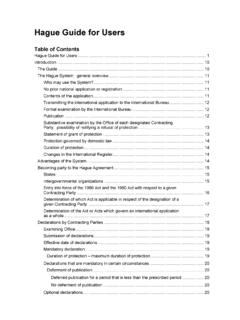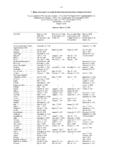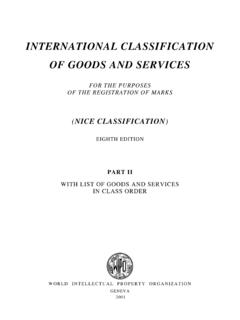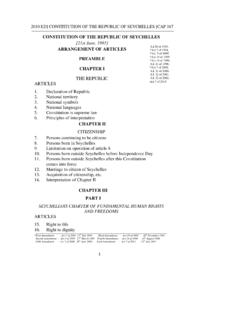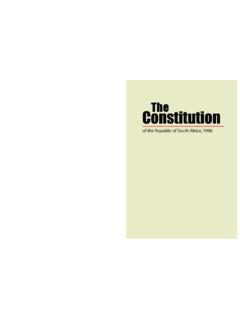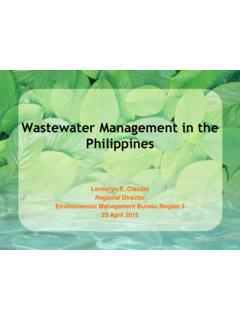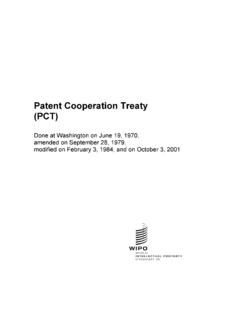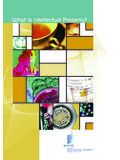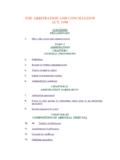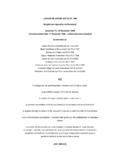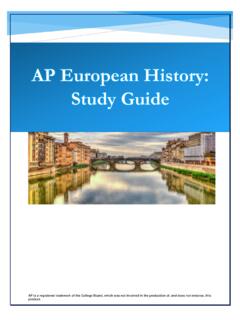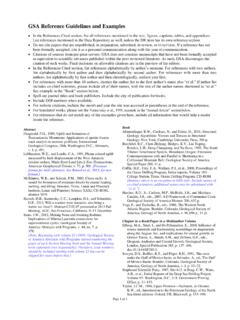Transcription of PARIS CONVENTION FOR THE PROTECTION OF …
1 guide TO THE APPLICATION OF THE PARIS CONVENTION FOR THE PROTECTION OF INDUSTRIAL PROPERTY AS REVISED AT STOCKHOLM IN 1967 by Professor G. H. C. BODENHAUSEN Director of BIRPI UNITED INTERNATIONAL BUREAUX FOR THE PROTECTION OF INTELLECTUAL PROPERTY (BIRPI) BIRPI 1968 Geneva, Switzerland CONTENTS PERIODICALS CITED o o o o o L Introductory Obse"ations ll. History and Principal Rules of the CONVENTION m. Commentary on the Articles of the CONVENTION Article I, paragraph (I) 0 Article 1, paragraph (2) o Article 1, paragraph (3) o Article 1, paragraph (4) 0 Article 2, paragraph (I) o Article 2, paragraph (2) 0 Article 2, paragraph (3) 0 Article 3 0 o o 0 o Article 4, Section A(l) Article 4, Section A(2) Article 4, Section A(3) Article 4, Section B o o Article 4, Section ql) (2) and (3) Article 4, Section C(4) Article 4, Section D o Article 4, Section E o Article 4, Section F 0 Article 4, Section Go Article 4, Section H o Article 4, Section I o Article 4bis 0 0 Article 4ter 0 0 o o Article 4quater 0 o 0 Article 5, Section A 0 Article 5, Section B o Article 5, Section C o Article 5, Section D o Article 5bis 0 o Article 5ter o o Article 5quater 0 Pa ge 5 7 9 17 17 21 24 25 27 31 32 33 35 38 39 40 43 45 46 51 52 55 57 58 61 64 65 67 73 74 78 80 82 85 4 Contents Page Article 5quinquies 86 Article 6.
2 87 Article 6bis .. 89 Article 6ter, paragraphs (1) and (2) . 94 Article 6ter, paragraphs (3) and (4) . 99 Article 6ter, paragraphs (5) (6) and (7) 101 Article 6ter, paragraphs (8) (9) and (10) . 102 Article 6quater .. 1 04 Article 6quinquies, Section A 107 Article 6quinquies, Sections B and C . 113 Article 6quinquies, Sections D, E and F 119 Article 6sexies . 122 Article 6septies. 124 Article 7 . 128 Article 7bis 129 Article 8 . 133 Article 9 . 135 Article 1 0 . 138 Article 10bis. 142 Article 10ter. 147 Article 11 . 149 Article12. 153 Artkk13 1~ Article 14 . 167 Article 15 . 174 Article 16 . 179 Article 17 . 188 Article 18 . 191 Artkk19. 1~ Article 20 . 194 Article 21 . 199 Article 22 . 203 Article 23 . 204 Article 24 . 206 Article 25 . 208 Article 26 . 210 Article 27 . 212 Article 28 . 216 Article 29 . 218 Article 30 . 220 IV. Text of the PARIS CONVENTION for the PROTECTION of Industrial Property, as revised at Stockholm in 1967.
3 223 V. Member States of the International Union for the PROTECTION of Industrial Property ( PARIS Union) as on April 1, 1968 .. 253 Ann. Int. lng. Conseil Rev. Mex. Sch. Mitt. Contents 5 PERIODICALS CITED IN FOOTNOTES Annates de Ia Propriete industrielle, artistique et litteraire (France) Gewerblicher Rechtsschutz und Urheberrecht, Inter-nationaler Teil (Federal Republic of Germany) Industrial Property (BIRPI) Industrial Property Quarterly (BIRPI) Revue de droit intcllectuel, I'lngenieur Conseil (Belgium) La Propriete industrielle (BIRPI) Revista mexicana de Ia propiedad industrial y artistica (Mexico) Revue internationale du droit d'auteur (France) Revue internationale de Ia propriete industrielle et artistique (France) Reports of Patent, Design and Trade Mark Cases (Great Britain) Schweizerische Mitteilungen tiber gewerblichen Rechts-schutz und Urheberrecht (Switzerland) The United States Patents Quarterly ( ) guide to the Application of the PARIS CONVENTION for the PROTECTION of Industrial Property as revised at Stockholm in 1967 I.
4 INTRODUCTORY OBSERVATIONS The number of States party to the PARIS CONVENTION for the Protec-tion of Industrial Property has increased rapidly in recent years: on January I, 1963, 51 States had acceded to the CONVENTION ; on January 1, 1968, this number had risen to 79. A further increase may be expected in the near future, as many States are known to be studying or preparing their accession to the CONVENTION . In view of these facts many more governments, national administrations or courts, practitioners, inventors, and industrial or commercial enter-prises will have to apply, or may request the application of, the CONVENTION than ever before. It has therefore appeared useful to establish a concise guide , briefly commenting upon the principal pro-visions of the CONVENTION and indicating replies to the main questions which may arise from day to day in relation to its application. Since the International Bureau, which is entrusted with the adminis-tration of the CONVENTION , is not competent to determine how it should be interpreted, the views expressed in this guide are only those of the author.
5 The International Bureau has limited its role to the publica-tion of the guide in view of its presumed usefulness. The purpose of the guide is to deal in a very simple manner with the principal questions relating to the application of the CONVENTION . 8 Introductory Obsenations For that reason, theoretical considerations have been omitted, other literature is only occasionally mentioned, and national legislations and case law are cited only as examples. Another reason for these latter limitations is that the author's knowledge of languages is unfortunately limited, so that laws, administrative or judicial decisions and legal studies not published in any language known to him will probably have escaped him. In these circumstances. a certain lack of balance would exist if much attention were given to publications in one language and none to equally important publications in another. The guide comments on the PARIS CONVENTION as revised at Stockholm in I 967.
6 The Stockholm text is not yet in force at the time of publication of the guide , but it will no doubt soon become the text of the CONVENTION adhered to by many countries. Since, moreover, with one exception (addition of Article 4 1(1) and (2)), the Stockholm text of the CONVENTION differs from the preceding lisbon text only in the administrative and final clauses (Artices 13 to 30), the Stockholm text seemed to constitute an appropriate basis for a commentary. This commentary is based on the official text of the CONVENTION in English,1 established in application of Article 29(1)( b) of the CONVENTION . a text whlch .presents some differences as to form with the former official English translation of the lisbon text. The guide , after briefly sketching the history and the principal rules of the CONVENTION , comments upon each of its articles and para-graphs separately. 1 Sec , 196~, p. 122. ll. HISTORY AND PRINCIPAL RULES OF THE CONVENTION The CONVENTION was drafted, after preparatory work in 1873 and 1878, at a Diplomatic Conference in PARIS in 1880, signed, with an additional Final Protocol, by 11 States 1 at a similar Conference in 1883 and ratified by these States in It entered into force one month after the deposit of the instruments of ratification, on July 7, 1884.
7 The CONVENTION specified that the contracting States constituted themselves into a Union for the PROTECTION of .industrial property, a legal construction the consequences of which will be examined hereinafter. From the start, the CONVENTION (Article 14) provided for periodical Conferences of Revision with a view to the introduction of amendments designed to improve its Such Conferences were held in Rome in 1886, in Madrid in 1890 and 1891, in Brussels in 1897 and 1900, and in Washington in 1911. but since none of the adopted texts is still binding on any of the member States they need not be commented upon as such. Further revisions cf the CONVENTION took place at The Hague in 1925, at London in 1934, at lisbon in 1958 and at Stockholm in 1967. All these last-mentioned texts are, or will soon be, in force between some member States; the relations between States bound by different texts will be: examined below.
8 In discussing the articles and paragraphs of the CONVENTION herein-after, the development of each provision will be traced throughout the different revisions of the CONVENTION , in order to facilitate further study of the background of each provision in the Acts of each Revision 1 Belgium, Brazil, France, Guatemala, Italy, Netherlands, Portugal, Salvador, Serbia, Spain and Switzerland. 2 At the same time instruments of accession were deposited by Ecuador, Tunisia and the United Kingdom. 10 History and Principal Rules of tbe CONVENTION Conference.! Where, in many cases, special reference is made to the history of a provision of the CONVENTION , the purpose is to indicate the questions which were before the Conference or Conferences which established the provision. and to illustrate or clarify its meaning. As to the principal rules of the CONVENTION , a distinction must be made between four different categories of rules which it contains: 1.
9 First. the CONVENTION contains provisions of international public law regulating rights and obligations of the member States and estab-lishing the organs of the Union created hy the CONVENTION , as well as provisions of an administrative clu:uacter. Examples of this category are: Article 6ter(3) and (4), requiring or allowing the member States-and international organizations of which at least one of these States is a member-to make certain communications concerning emhlems, etc., to be excluded from registration and use as trademarks; Article 12, which requires the member States to establish a national industrial property service which will issue certain publications (cf. also Article 4 D(2)); Article 13, which establishes an Assemhly consisting of the member States, and deals with the composition, the powers and duties of the Assembly, and its voting procedure ; Article 14, establishing an Executive Committee, again with provisions as to its composition, powers, etc ; Article 15, regulating the functioning of the International Bureau, which will perform the administrative tasks concerning the Union established hy the CONVENTION ; A rticle 16, regarding finances, that is, the budget of the Union, the contributions of the member States, etc ; Articles 17 and 18, concerning the amendment of Articles 13 to 17 and revision.
10 Of the other Articles of the CONVENTION ; Article 19, envisaging the possibility of special agreements between the member States, which must not, however, contravene the provisions of the CONVENTION ; Article 20, concerning ratification of and accession to the. CONVENTION by countries already members of the Union, that is, countries party to an earlier Act of the CONVENTION ; 1 With respect to the Revision Conference of Stockholm in 1967, references will be limited to those documents of the Conference which, at the time of writing this guide , were already published; this was not the case as far as the complete Acts of the Confer-ence of Stockholm are concerned. History and Principal Rules or the ConTention 11 Article 21, regarding accession by countries outside the Union ; Article 22, dealing with the consequences of ratification or accession ; Articles 23 and 27, regarding the relationship with earlier Acts of the CONVENTION ; Article 24, regulating the possibility of applying the CONVENTION to dependent territories ; Article 26, concerning the duration and denunciation of the CONVENTION ; Article 28, relating to disputes between member States concerning the interpretation or application of the CONVENTION ; Article 29, concerning signature of the CONVENTION , languages and depositary functions ; Article 30, containing transitional provisions.
